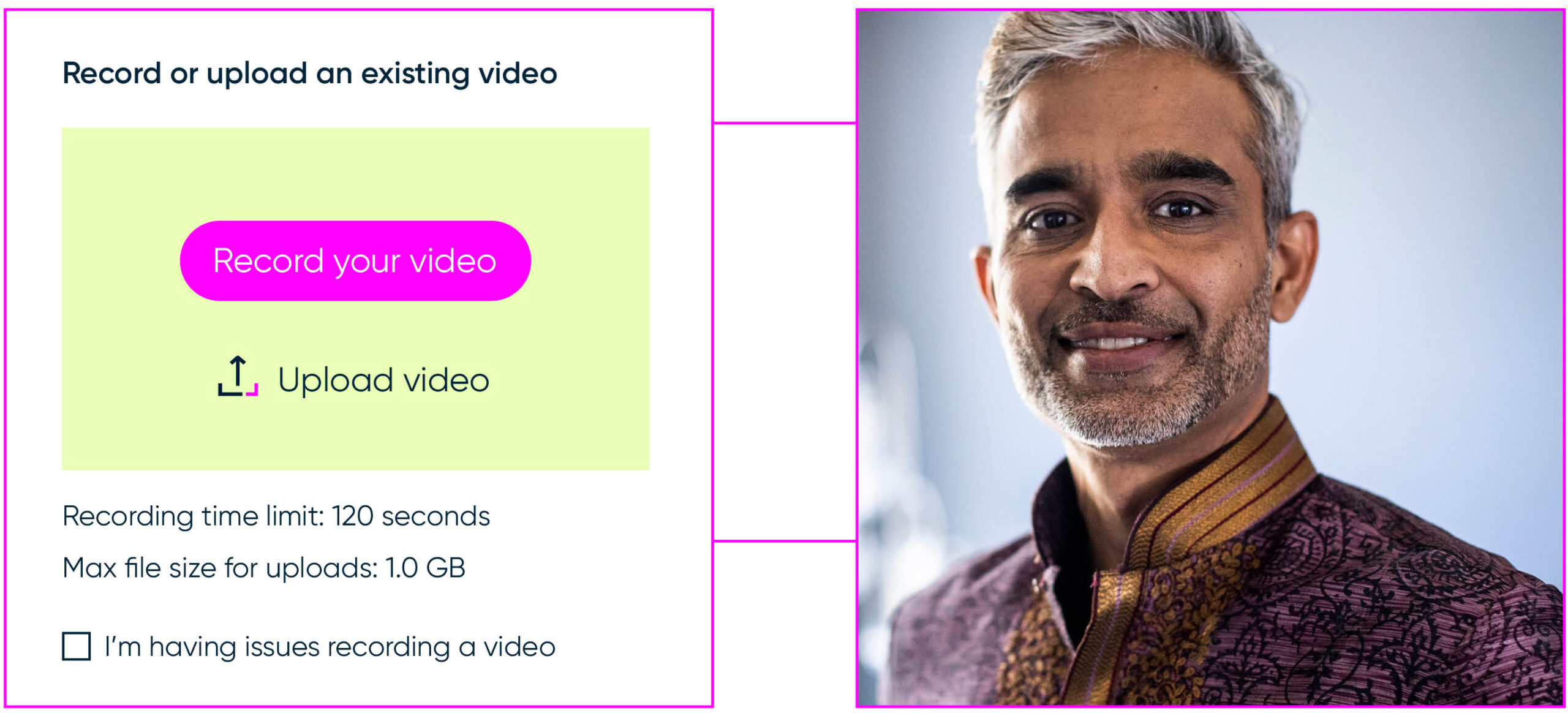Video open ends Research best practices

Why video open ends?
Forsta’s survey platform enables respondents to submit video open ends, or a video capture via a webcam or mobile video camera. With the video open end, the respondent is asked to record and upload a video in response to a question or exercise in the survey.
The idea here is to provide a way for the respondent to express themselves beyond rating scales. The video open end can serve a similar function as an open end text question, but also be a richer source of data. Studies have shown that respondents say more on video than text open ends.
Visual and audio cues convey emotions in a way that text cannot. From a person’s tone and facial expressions, a video can vividly illustrate how a person feels.
Customer testimonials
Perhaps even more valuable, when presenting to stakeholders, the researcher can use the videos to share insights and customer testimonials. During presentations, engaging the audience is one of the hardest things to do.
Videos provide an audio-visual testimonial of the customer that resonates much more powerfully than tables and charts. Digital marketers, for instance, supplement other forms of advertising with video in order to sell, engage, and improve overall advertising campaign performance.
It’s paradoxical; if you can’t show it to them with numbers, they’re usually not going to pay attention…but if you get a couple of consumers on video to illustrate what you’re talking about in the numbers, that’s actually what they remember.
Scott McDonald
Senior Vice President for Research & Insights, Conde Nast Interviewed in QRCA Views by Judy Lange
How to capture video open ends in your survey
With video testimonials, respondents are asked to record themselves addressing a survey question. The respondent selects a button within the survey to activate their device’s camera. When a recording is made and the user is satisfied, the video is automatically uploaded to the survey and the respondent is directed to the next survey question.

It is important to remember that a video testimonial will be different from what respondents are used to encountering in a survey. As such, it is necessary to provide clear usage instructions. This will ensure the best possible outcomes for both respondent participation and video quality. Explanatory text that introduces the video testimonial concept will also help respondents prepare for what is expected of them.
“For this next section, we’d like you to try something different. Would you be willing to record a video answer for one question, when prompted? This is not required to complete the survey and is strictly voluntary.”
Since privacy may be a concern, a video capture request must include direct consent from the respondent. It is also important to ensure that the respondent has the required technology to capture a video recording. A simple question can accomplish both of these goals:
Do you have a functioning video and audio recording device on the computer or device you are using to complete this survey?
⃣ Yes, and I agree to the terms of the video release
⃣ No, I do not
From here, the respondent is ready to record their video. Provide step by step instructions, and ask the respondent to be in a quiet, well-lit place to ensure a quality recording. Even at this stage, the respondent should be given the opportunity to skip the question should they encounter any difficulties or change their mind.
Here are some tips…
- Try to record the video in quiet surroundings
- Sit or stand comfortably
- Review the question before starting the video and think about what you want to say
- Use good lighting so we can see your face
- Make sure your microphone is working so we can hear you
- Have fun with it!
Speaking in front of a camera may be a new experience for some, however respondents will usually find it a much easier way to express themselves. We therefore strongly recommend framing video open-end questions in very personalized ways. This point can’t be emphasized enough.
For example, asking about a personal experience or real situation can elicit extremely rich video responses. Whereas, simply asking about a person’s brand preference may not yield much if a person doesn’t have a strong opinion or experience to recall.
What to expect?
Video participation tends to be modest. Every situation will be different, but generally you can expect to collect quality videos from 5-10% of survey completes. An engaging topic has the potential to increase participation, but if a researcher desires to collect a large amount of responses, an additional ‘kicker’ incentive is recommended. The researcher can expect to see interview length increase by 3-5 minutes for those participating in video testimonials. However, this tends to have a negligible effect on the overall sample LOI, as many respondents will not participate. As such, the researcher may wish to limit participation on video testimonials, if LOI increases are a concern.
Not everyone will have the right technical equipment or record usable content. Additionally, respondents may decline to record a video due to privacy concerns related to showing their faces. Therefore, it is very important for the consent form to address questions about how the videos will be used. Respondents must be given a way to opt-out of video testimonials; otherwise researchers can expect heavy dropout rates. The goal, however, is not to collect a large number of videos or a representative sample. Instead, the researcher should aim for a dozen snippets to choose from to better-illustrate survey data for presentation purposes.
Related resources
Adapt to thrive: AI and the market researcher
Adapt to thrive: AI and the market researcher Webinar synopsis: The future doesn’t matter. It’s what you do today that will allow you to excel in the dynamic, thrilling, and sometimes turbulent market research ecosystem. AI and automation are rewriting what it means to deliver value. Stakeholders cry out for insights yesterday, driven by their […]

Human Experience in the AI era: A guide for insights leaders
Human Experience in the AI era: A guide for insights leaders Human Experience in the AI era: A guide for insights leaders Future or flatline? Nearly 65% of market research teams and agencies use AI for work today. And it feels like AI is reinventing the industry faster than any of us can keep up. […]

Decipher
Decipher Power complex surveys with ease. Decipher is the leading survey platform for top researchers worldwide. Built for speed and scale, it delivers faster, deeper insights with the precision experts need and the flexibility teams love. Any survey. Any complexity. Run quick tests to global trackers with drag-and-drop ease or full-code control, advanced logic, rich […]

Learn more about our industry leading platform
FORSTA NEWSLETTER
Get industry insights that matter,
delivered direct to your inbox
We collect this information to send you free content, offers, and product updates. Visit our recently updated privacy policy for details on how we protect and manage your submitted data.